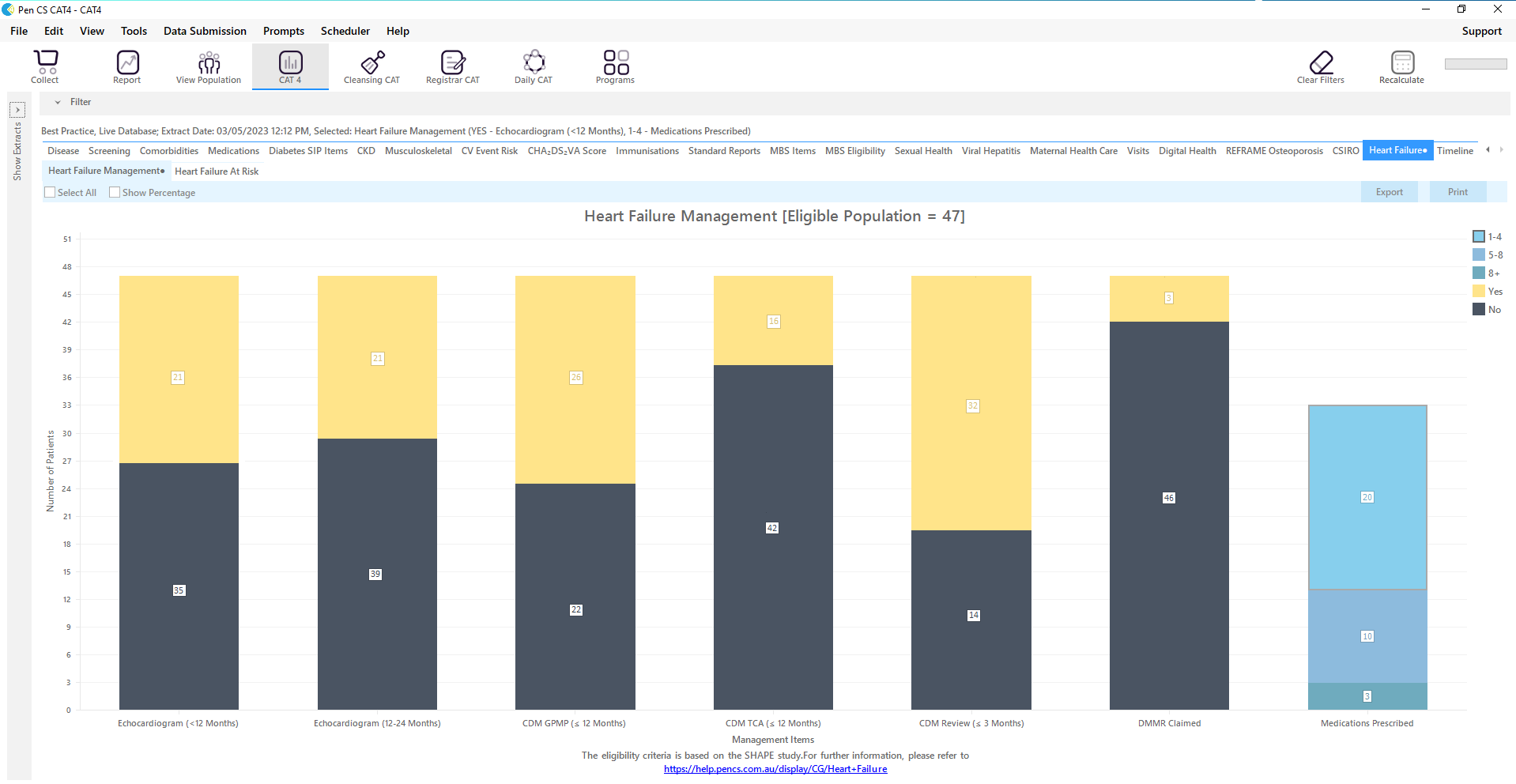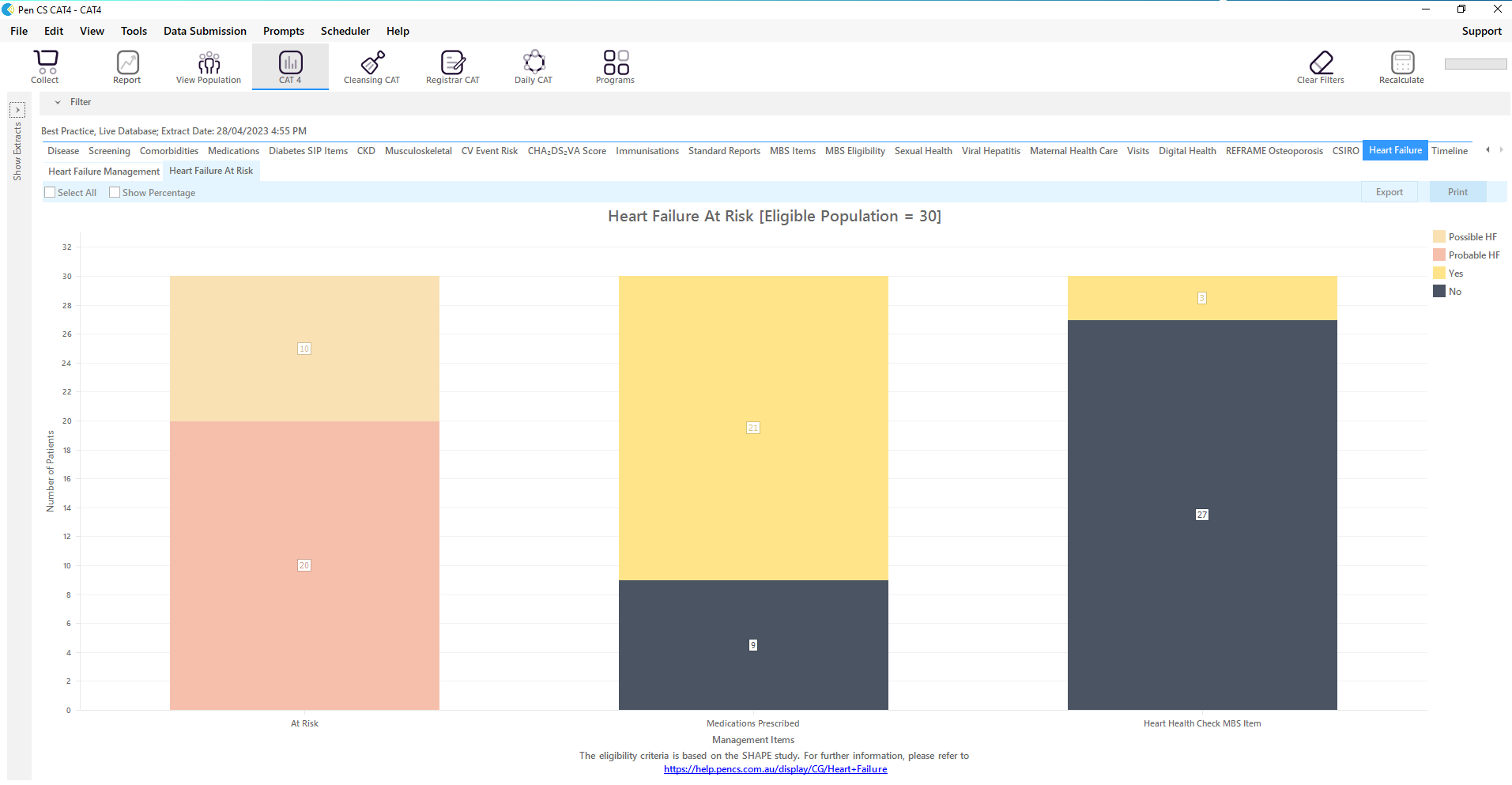Novartis in collaboration with Pen CS have co-developed the Heart Failure CAT Reports alongside the Heart Failure Triage Tool Topbar app.
These reports have been designed for use by practices to -
- Find diagnosed & undiagnosed Heart Failure patients and
- Better manage and accelerate the movement of these patients through primary care.
There are 2 types of Heart Failure reports now available in CAT.
- Heart Failure Management Report
- Heart Failure At Risk Report
Heart Failure Management Report –
This report assists with:
- Tracking and monitoring of patients who have a coded diagnosis of Heart Failure.
- Display the status of below clinical items that need to be reviewed for these patients, allowing healthcare providers to follow up on items that are outstanding or not at target.
- Echocardiogram
- CDM – GPMP MBS item
- CDM – TCA MBS Item
- CDM Review MBS Item
- DMMR MBS Item Claimed
- Medications prescribed.
Heart Failure At Risk Report –
The At Risk CAT Report assists with:
- Identifying patients who are at risk of Heart Failure. Displays the status of risk factors for patients who have one or more risk factors.
- Improve coded diagnoses of conditions, helping to increase the amount of patients with HF in medical records.
- HCP can recall patients or share patient information with those who are at high risk.
Recall Patients –
Both reports enable a patient list to be generated of patients who meet the patient inclusion criteria.
This list can then be used for recall purposes.
Recall may be conducted automatically using CAT's Recall function, or the list may be exported and added to the practice's own recall software
Both reports (At Risk and Management) may be used for recall purposes:
- At risk: recall patients at risk of HF to evaluate patient's status in consultation, and diagnose accordingly
- Management: Recall patients due for GPMP or TCA
Resources –
- Shape Study (Parsons et al. (2020)
- Guidelines for the Prevention, Detection, and Management of Heart Failure in Australia 2018 (Atherton et al. 2018)
- 2021 ESC Guidelines for the diagnosis and treatment of acute and chronic heart failure



